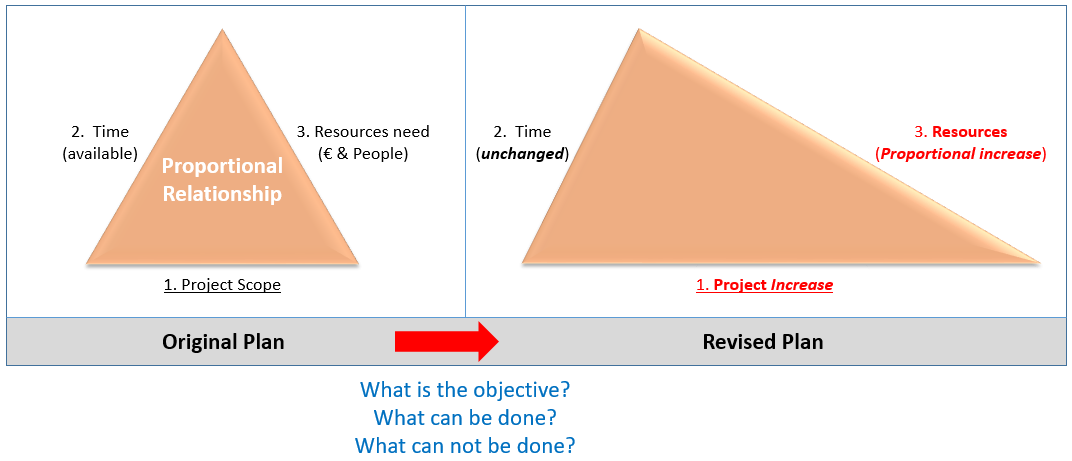As the operational requirements are generally created by management and thus tend to be high level, they need to be evolved into actions and/or tasks that need to be undertaken to fulfil those requirements. Therefore, one of the first tasks of the airspace team is to decide what the objectives of this airspace project are and these operational requirements drive the project’s objectives, scope and timelines. Project objectives are easily derived from the operational requirements that triggered the need for the airspace change. If the project has been driven by national needs, for instance if too much noise over a residential area is the trigger for an airspace change, then the project objective(s) would be linked to noise reduction such as reducing the noise footprint over village X or Town Y by designing RNP SID/STARs.
At the regional level, the PBN IR (EU 2018/1048) has given the European States a clear set of operational requirements that must be implemented and they can be summarised as follows:
- Approach: Implement RNP APCH
- Terminal: Implement, as a minimum, RNAV 1 SIDs/STARs
- En-Route: Implement RNAV 5

Once the project’s objectives have been identified, the next things to be agreed are the scope and timescale of this specific airspace change. Defining the project scope can be significantly more challenging the identifying the project objective. The scope of the project is defined by how much time and the level of resources available to the project team. With limited resources, time, budget or personnel the scope will need to be small; it is important to be realistic with what can be achieved and to over extend the project’s targets is only setting up the team for failure. Being realistic with limited resources could highlight to management the challenges faced by the team in meeting the operational requirements on time. If time is the limiting factor, then additional manpower may allow work to be taken concurrently. If manpower, or to a lesser extent budget, is the limiting factor then undertaking the work in phases may be a solution but it will impact on the delivery date. The key message in setting out the scope of work to be undertaken is:
‘Do not bite off more than you can chew’
Setting a clear set of ‘goalposts’ for the project will enable the Airspace design team to remain focused and should ensure that project ‘creep’ does not set in. Many implementations fail because the aims of the project drift either due to changing circumstances or due to the addition of extra actions such as adding an ILS deployment to an already planned SID/STAR and RNP APCH redesign to a terminal airspace. In addition, an agreed scope to the project will enable the project team to say what is ‘in scope’ and reject anything that is ‘out of scope’, thus minimising the chance the project failing due to overrun.
Resources, Time and Scope are the three sides of the project planning ‘triangle’.
The time element on any airspace project is important. Controllers and pilots are accustomed to having a very short period between planning and execution and expectations must be managed. For example, a case where an airspace concept has unexpectedly identified the need for a new DME to provide coverage throughout a terminal airspace. The installation and commissioning for use of an additional DME could take up to two years to achieve, if one considers the need to find an available frequency and that it may be necessary to find a location (and perhaps build an access road and provide a power supply). Procurement processes for the equipment can be lengthy, as can the delivery time, civil works needed to build the site, installation, calibration both ground and flight check until final commissioning for use by the CAA. Similarly, the time needed in some cases for public consultation can be extensive e.g. the
placement of SIDs/STARs may be a sensitive issue for a particular community and necessitate comprehensive environmental impact analysis; ATS routes over a nature reserve below a specific altitude can become an issue of visual ‘intrusion’ and result in the need for complex negotiations.
Finally, the team needs to consider when the project objective is to be meet this is the implementation date. The implementation is to be an AIRAC cycle date, which are predefined. Therefore, in defining the scope, the implementation date should be the starting point for calculating back through all the planning, designing, validating and implementing activities to see when the project should start. The implementation dates that the PBN IR has set are as follows:
|
Date: |
|
|
03 Dec 2020 |
RNAV 5 at or above FL150 |
|
|
RNP APCH at all IRE without Precision Approach (PA) |
|
25 Jan 2024 |
RNAV 5 for all en-route operations |
|
|
RNAV 1, as a minimum, for 1 SID/STAR per IRE |
|
|
RNP APCH at all IRE |
|
|
Option: RNP 0.3 for rotorcraft |
|
06 June 2030 |
RNAV 1, as a minimum, for 1 SID/STAR per IRE |
|
|
Option: RNP 0.3 for rotorcraft |
Instrument Runway Ends
To assist teams with time planning, in the PBN Tools section, there is the Staff Effort Planning Tool. This tool allows anyone to calculate the time required for a particular project. By selecting a specific implementation date, the tool will calculate backwards a number of working days per activity. Mindful of the unpredictability of some of these timescales in individual States, the tool, which has an average number of days set, allows the user to adjust the number of days required for each activity. The simple staff management tool cannot consider the time needed for public consultation or the regulatory processes as they are State specific. However, the tool enables the project team to make a time estimations for the project.